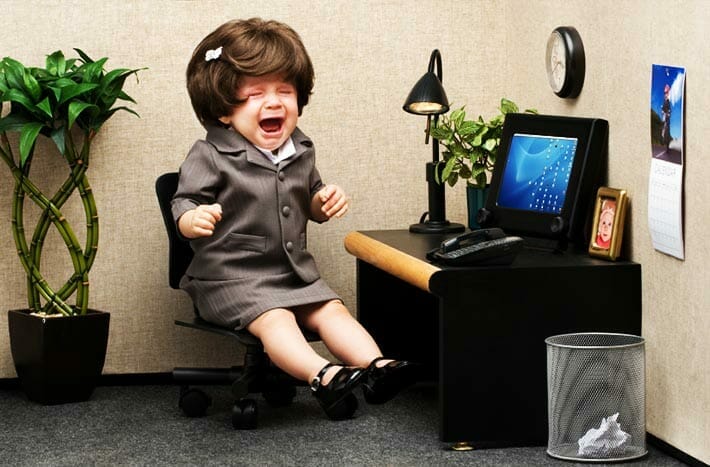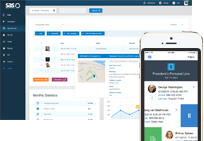- Log In
- Support
- Company
- Contact Us
- Live answers @ 1-888-532-4794
Why optimism is essential to good customer service.

What’s the difference between an optimist and a pessimist? The optimist is the person who invented the toilet. The pessimist is the person who invented the diaper.
Optimism, while undeniably great fodder for countless jokes, is one of the most critical components in successful businesses. Nowhere are the benefits of a positive attitude more prevalent than in the customer service industry. One of the most powerful tools customer service warriors have at their disposal when interacting with a customer is their attitude. Fortunately, just like any tool, attitude can be shaped and sharpened to serve virtually any purpose.
Before interacting with a client, clear your mind of negative thoughts, focus on the present, and visualize the best possible customer service outcome – the outcome where the customer is happy. This simple visualization can make all the difference; here’s why:
Remember: Positivity is contagious.

If you work in customer service, you have undoubtedly faced your fair share of irritated customers. More than likely, you have also dealt with customers who are insulting and offensive. In these situations, it is easy to get caught up in the negativity of the individual that you are attempting to help. Conversations that start with the best intentions can quickly end in frustration and dis-satisfactory experiences for the agent and customer alike. However, it doesn’t have to be that way. Here are a few tips make sure your positivity is viral:
- Kill them with kindness: If your customer says something offensive, empathize with them, and tell them that you know these situations can be frustrating.
- You aren’t the enemy: If your customer starts making you the enemy, remind them that you are on their team, attempting to tackle their problem together.
- Be a builder: Reframe the mindset of the person you are working with by setting a positive example.
- Always stay positive: Show them that you won’t be fazed by pessimism and that you will remain positive no matter what.
Solving problems turns angry into happy. Stay action-oriented.

Remaining positive allows you to focus on solutions rather than problems, and it will make you a more effective customer service agent. Certainly, you must take the time to understand the issues that a customer is facing; nonetheless, all of these challenges should be framed as opportunities for you to demonstrate your superior problem solving skills. Here are some tips to expedite the problem solving process:
- Break down problems: To keep things from becoming overwhelming, break the larger problem down into its component parts, and create a plan for solving each part. If a customer has a problem with customer service, billing, and their order, handle one issue at a time.
- Stay confident: Your confidence in a prompt resolution will help to alleviate any tension that your customer may be feeling. If you think the
- Let your optimism shine: The more optimistic and proactive you are, the more likely that your self-assured attitude will rub off on your client. They’ll be happier and your work environment won’t be nearly as stressful.
Handling problems is stressful. You can manage it.

Customer service is an industry that is oftentimes defined by prolonged periods of tension. A 2013 study from the National Academy of Sciences proved that the human body and brain were not designed for extended stress. But brief stress is actually good for performance. Our prehistoric ancestors had intermittent, short-lived moments of stress. They saw the saber-toothed tiger and they either ran away, or they became lunch. Thanks to evolution, our bodies have adapted to these types of stressful situations and, consequently, humans are actually shown to have improved performance during brief spurts of stress.
Yet, the modern workplace is not defined by short periods of highly stressful situations. Due to irritating bosses, frustrating customers and bad attitudes, most workplaces are about as nerve-wracking as having a saber-toothed tiger sitting behind you for eight hours straight. In order to survive in these settings, we have to reduce or eliminate as many stressors as possible. The easiest way to do this is to circle back to the premise of this post and maintain a positive attitude.
The right approach to customer service interactions can make your job easier. When you change a customer’s outlook from negative to positive, they aren’t the only ones who will reap the benefits. So be happy. It’s not just good for your customers; it’s good for you!
Categories
- Advice (32)
- Answering Service 101 (18)
- Best Practices (10)
- Call Center Jobs (6)
- Call Center Software (20)
- Comparison (2)
- Customer Service (30)
- Funny (31)
- Holidays (19)
- Industry Hacks (19)
- Infographics (53)
- International (1)
- Medical (8)
- News (12)
- Phone Etiquette (2)
- Phones (14)
- Pricing (8)
- Quizzes (3)
- Receptionist (11)
- SAS Products (29)
- Scripting (4)
- Services (5)
- Small Business (25)
- Starting Up (7)
- Tips and Tricks (19)
- Uncategorized (1)
- Videos (19)
- Workplace (6)
Recently writen
- Call Center Script Best Practices: Advanced Script Block Tips to Optimize Your Answering Service
- January 2025 Release Notes – Adjustments to Call Details Timeline, New Scripting Updates, Live Transcription, and more!
- April 2024 Release Notes – Voicemail Greetings, Ability to Access Websites With a Username and Password, and more!
- March 2024 Release Notes – New Add-On, Settings Revamp, and more!
Follow Us
How about a demo?
We'll show you how our web portal works and answer any questions you have about SAS.
Schedule a demo







